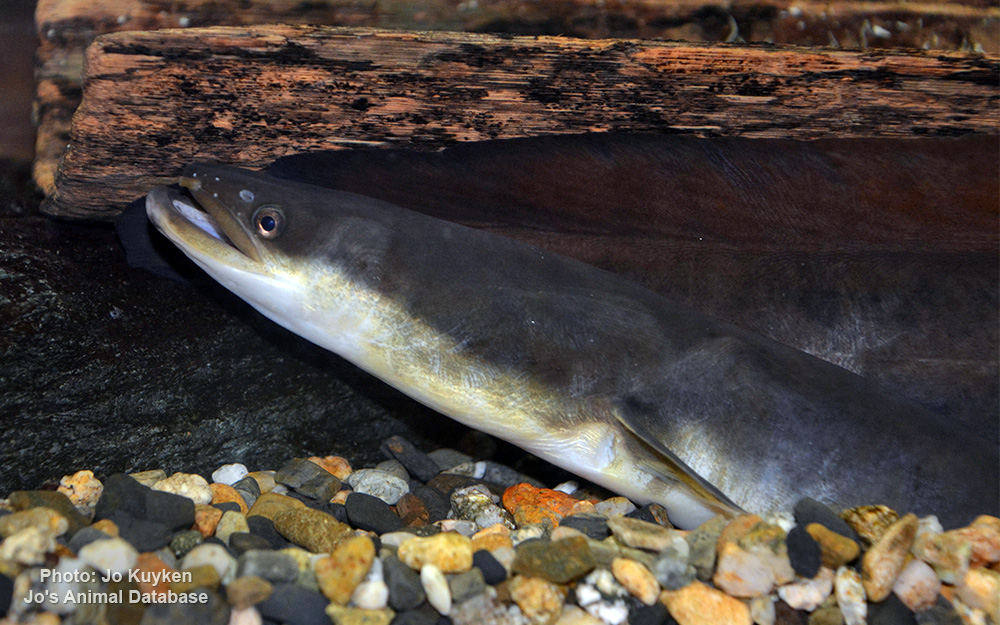Japanese eel
(Anguilla japonica)

Image source: Jo's Animal Database
Classification
General data
The Japanese eel is a species of anguillid eel found in Japan, Korea, China, and Vietnam, as well as the northern Philippines.
Max length is up to 150 cm, but the common length is just 40 cm. Max. published weight is 1.9 kg.
There are three main species under the Anguilla genus, and all three share very similar characteristics. These species are so similar that it is believed that they spawned from the same species and then experienced a separation due to different environments in the ocean.
Like all the eels of the genus Anguilla and the family Anguillidae, it is catadromous, meaning it spawns in the sea but lives parts of its life in freshwater. Raised in aquaculture ponds in most countries, the Japanese eel makes up 95% of the commercially sold eel in Japan, the other 5% is shipped over by air to the country from Europe. This food in Japan is called unagi; they are an essential part of the food culture, with many restaurants serving grilled eel called kabayaki. However, presumably due to a combination of overfishing and habitat loss or changing water conditions in the ocean interfering with spawning and the transport of their leptocephali this species is critically endangered.
The brown-stage, also known as the yellow stage, stage of the life lasts for 5-10 years, and during this time, the eel feeds on worms and insects. The characteristics of this stage include a dull pigment with a grey, brown, and greenish top and white underbelly. This pigment is related to the environment as it relies significantly on the color of the water.
The eels grow to around their adult size in this stage as well during this time, which is up to 57 - 60 cm for females and 35 cm for males. At 30 cm, the eels grow sexual organs for the first time and prepare to make their great migration.
Once these eels reach adulthood, they develop a silvery color under their skin. This change in appearance signaling that they are entering their last stage of life, the silver stage. During this time, the eels prepare to migrate to the spawning area by naturally producing more oil in their body. This oil is stored in the muscles of the eels and is approximately 20% of their body mass. Once the appropriate content of the oil is reached, the eels stop feeding. During the autumn and generally on the last quarter of the moon, the eels migrate downstream to the center of the pacific.











